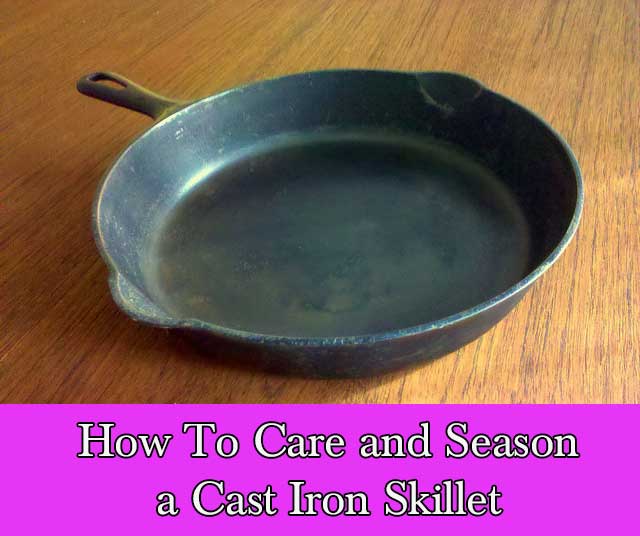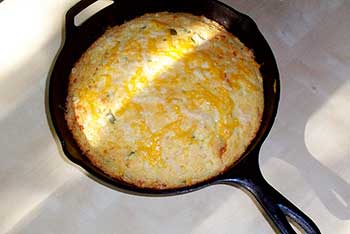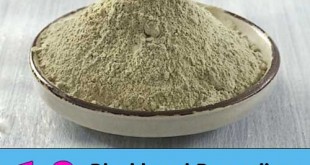How To Care and Season a Cast Iron Skillet

For large, hearty, and delicious breakfasts, and an all-around utility player when it comes to cooking on a stove, in the oven, on a grill, or over a campfire, cast iron pans are a necessity for anyone who loves to cook. There are so many benefits to having a perfectly seasoned and ready-to-go cast iron pan, but it takes some time and care to get the coating just right. And it takes some know-how too!
Luckily, the topic of today’s post has you covered on the why and how of cast iron pans and proper seasoning and care.
The Why:
Cast iron pans are a great non-toxic cookware option and a wonderful addition to any kitchen. They are less expensive than other non-toxic options and will last a lifetime. These heavy and almost indestructible pieces of cookware can withstand the harsh conditions of a make-shift grill or do the job on a basic stove.
Once a cast iron pan is properly seasoned, it is simple and easy to clean. These pans are relatively non-stick, although admittedly not to the point of Teflon. The payoff, of course, is that you won’t be releasing harmful chemicals into the air or into your food.

Since a properly seasoned cast iron pan can last so long, they are common gems to find in rummage stores or yard sales. Whether new or used, invest in one today and your family will thank you for it now and later too.
The How:
If you’ve tried a cast iron pan with unsuccessful results, the cause is more than likely due to improper seasoning. When one seasons a cast iron pan, one creates a patina, or coating, which serves to protect the pan, add a nuanced taste to your food, and make the cooking process a bit easier.
To properly season a cast iron pan requires a good quality oil. There’s much debate to be had on this subject, and the most common go-to’s are admittedly vegetable oil and corn oil. If you’re a health-conscious cook, however you probably don’t want to be lubing up your cookware with these.
A healthier and arguably better source for your oil is coconut oil. When choosing to coat your pan with this oil, make sure to select a refined option as unrefined types can create some problems. Flax seed oil is also easily oxidized, so it could be a good option you have an aversion to coconut oil for any reason.
For the true purist, traditional fats such as lard or tallow can be a great addition. The clarified butter popular in Indian cooking called ghee can also be a healthy and stellar option.
Step-by-Step:
1. Once you attain your untreated, unseasoned cast iron pan, you’ll need to give it a good rinse with some soap and water. Using soap on your cast iron will soon be a no-no, but before it’s seasoned, you should give it a proper cleaning. Scrub off rusty areas with a little salt-water paste.
2. The heating process is key when it comes to seasoning your pan, so get ready to seal in your patina by preheating your oven to 350 degrees. This temperature is appropriate for a new cast iron pan. For older pans that have had prior seasonings, you may need to up the temperature a bit in order to remove any lingering seasoning and to prepare for a new coat.
3. After you’ve set to preheat, prep the pan by heating it for 5 to 10 minutes in the warming oven. This way, the pan will be more receptive to the oil bath it’s about to receive.
4. Remove from the oven and take an old rag, towel, or unwanted t-shirt and spread your oil of choice over the pan. Coat both the inside and outside of the pan making certain not to miss any spots.
5. Once the oven is properly preheated and your pan is oiled, you can place the pan in upsidedown for 1 to 3 hours.
6. After this initial locking-in of the oil, remove the pan from the oven and allow it to cool completely.
7. Repeat this process 3 to 5 times. Older and rougher pans may need a few more treatments than the newer and smoother ones.
8. You are ready to cook some delicious food with your new pan!
Wear and Care:
To make the life of your cast iron pan healthy, hearty, and useful it’s important to protect this lovely new seasoning you’ve worked so hard for. For optimal cast iron use, make sure to follow these care tips.

For all cleaning purposes, make sure to wash your pan as immediately as possible. Soap should not be used to clean the pan. Simply rinse with warm water and brush away the mess with a brush or scrubber. Gentle scrapers can be necessary and effective in getting hardto-remove food off your pan. Anything more powerful than a gentle scrubber could be too abrasive and damage the seasoned finish. Towel dry to keep rust away.
After every use and subsequent wash, you can do yourself and your pan a favor by recoating it with a light oil treatment. This will help keep the pan’s coat strong and will get you ready for the next dish you’ll prepare in it, even if it’s not for a few days from this re-coat.
Many cast iron pan veterans recommend newbies to avoid cooking highly acidic things in your cast iron pan. Acidic ingredients can not only infringe on the flavor of your perfectly seasoned patina, but can draw more iron out of the pan.
Care for your skin and prevent burns by always keeping in mind that every part of a cast iron pan gets hot when you cook with it. Make it a habit to always keep an oven glove on the handle of your pan.
Many cast iron pans come pre-seasoned too, so if you’re not yet ready to get into the simple but somewhat time-consuming process of seasoning, use these clean and care tips on your already seasoned pans.
 Home and Gardening Ideas At home and Gardening ideas we believe inspiring readers about homesteading, self sufficiency
Home and Gardening Ideas At home and Gardening ideas we believe inspiring readers about homesteading, self sufficiency






Please help. I have a cast iron skillet, from a yard sale, that someone obviously neglected to care for properly. I have other iron skillets that I have no problems with because I take the time to properly care for them. I’ve tried everything I can think of but so far this skillet retains a rusty cast about it and nothing is getting rid of it. Can you suggest something that might work?? This skillet is a perfect size so I’m willing to try about anything to get this thing truly clean and rust free. Thank You!!!!!
In case anyone is wondering, iron skillets that are properly cared for are as non-stick and any non-stick pans made. Only iron skillets/pans last much longer.
You can try this https://www.livinggreenandfrugally.com/how-to-restore-cast-iron-cookware/ Hope it helps
I’ve had good luck with putting new acquisitions in my oven and turning it to self clean. This gives me an essentially new, raw cast iron. Then, using a wad of aluminum foil, soaked in waster, scrubbing the pan to remove rust. When done, rinse the pan and place in the oven or on stove over low fire to remove moisture, then coat with oil and place in oven as described in this article.
Wire cup on a 4″grinder first. Then a 3m buffing pad for a 4″ grinder. Then reguler cleaning as per article
try putting a old rusty cast iron skillet in a burning fire. I think we did this once and all the rust burned off. We must have twenty or more cast iron pans. Love cooking with the pans. Also only buy cast iron pans that are made in the USA